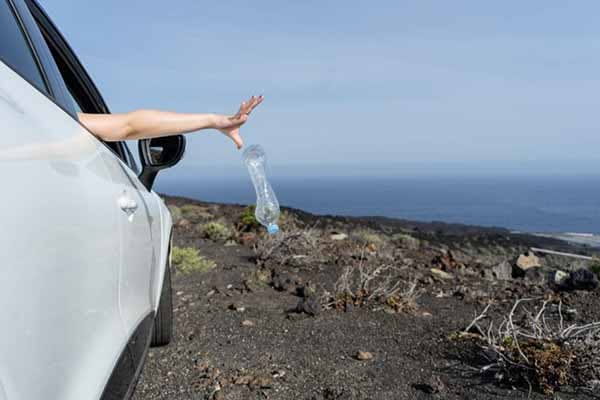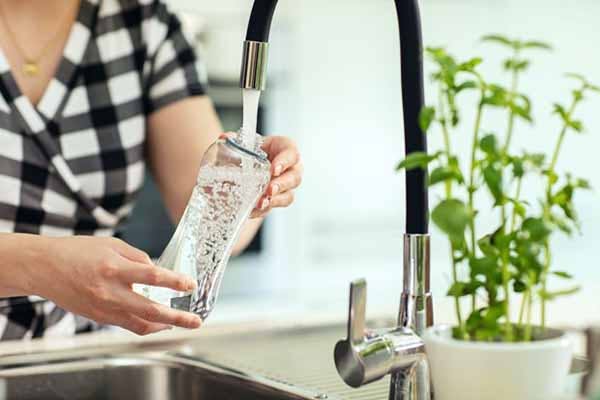🌟 New Arrival! Upgrade Your Water with Our Advanced Pitcher Filter. Shop Now
April 2022
Drink Water the Eco-Friendly Way: How to Drink Water Without Wrecking the Environment
Drinking plenty of clean water is one of the best things you can do for your health, so it’s no surprise that bottled water is the fastest growing choice in the beverage industry.
It’s good to be healthy, but unfortunately bottled water is an ecological disaster. Let’s look at what bottled water does to our planet, and what we can do about it. Read on to learn how to drink clean, healthy water without contributing to climate change or hurting our environment.
What Is the Environmental Impact of Plastic Water Bottles?
The root of the problem is disposable, single-use plastic water bottles. These plastic water bottles are bad for the environment at nearly every step of their life cycle. To get a more complete picture of plastic water bottles’ environmental impact, let’s take a look at all of the ecological problems that these bottles of water create at each stage of their life cycle.
Creation
Did you know that plastic water bottles come from fossil fuels? Most synthetic plastic products are sourced from fossil fuels, and that’s true when it comes to disposable plastic water bottles too.
The raw material in most plastic bottles is polyethylene terephthalate (a molecular mouthful that’s thankfully abbreviated to PET). Polyethylene terephthalate comes from crude oil or natural gas production.
This means that at the very beginning of its life cycle, a PET bottle is already contributing to carbon dioxide emissions. In fact, the greenhouse gas emissions from the creation of a single PET bottle are equivalent to the emissions created from fully charging your phone 32 times!
Transportation
Transportation is one of the most surprising ways that bottled water consumption is bad for the environment. Bottled water travels a surprisingly long distance before you drink it, and that can have a large environmental impact.
After water is pumped out of its source, it’s bottled in a plant and has to be shipped by truck to distribution centers and grocery stores, creating unnecessary greenhouse gas emissions and (if you drink it) increasing your carbon footprint.
Imported bottled water can add a several-thousand-mile boat ride into the equation.
Disposal
Disposable water bottles harm the environment before you ever see them, but they’re also hazardous after you finish your drink. Here’s why.
While plastic bottles of water are recyclable, most are simply thrown away. According to the U.S. Environmental Protection Agency (EPA), less than one-third of all plastic bottles are recycled.
Every year, around 10 million tons of plastic containers end up in landfills in the U.S. alone. Another 2.5 million tons are incinerated, releasing greenhouse gasses and adding to our collective carbon footprint.
Even worse, many plastic bottles that aren’t recycled, burned, or placed in a landfill eventually make their way into our oceans and soil. Roughly one-third of all plastic waste ends up in our water or soil. This plastic pollution isn’t just an eyesore, it’s devastating for our ecosystems as well.
That’s because unlike paper or cardboard, plastic waste doesn’t decompose. Eventually, natural processes can break a discarded plastic bottle into tiny pieces, but even then, it doesn’t go away. It simply becomes a new hazard known as microplastics.
Microplastics are plastic bits smaller than 5 millimeters long, and there’s a staggering amount of them in our waters and soil. One study found that these microplastics can measurably decrease the fertility of our soil.
In water, microplastic bits smother coral reefs and can be swallowed by sea life, blocking the digestive tract and leading to starvation and death.
However, it’s not just sea life or soil that’s affected — we humans are also exposed to plastic toxicity. When fish and shellfish ingest the smallest microplastics, they can become lodged in their flesh. When we eat seafood, these plastics can be transferred to our bodies.
Alternatively, when microplastics make their way into our soil, they can then leach into our groundwater. There are many ways that microplastics, caused by single-use plastic, can have impacts on human health.
How Can I Drink Water the Eco-Friendly Way?
Thinking of all of the barrels of oil and harmful chemicals associated with plastic bottles of water can be overwhelming. After all, we’re just trying to enjoy healthy, clean, refreshing water without hurting the environment!
Thankfully, drinking water the environmentally friendly way is easy. You likely have access to a source of fresh water that doesn’t need to travel a single mile by truck, train, boat, or car: the tap in your home.
A recent study found that the environmental impact of bottled water was up to 3,500 times greater than the environmental impact of drinking water from the tap. The environmentally friendly water choice is a no-brainer: it’s tap water.
Drinking water from the tap is not only more eco-friendly than bottled water, it’s also much, much cheaper. Bottled water can cost between 500 and 1,000 times more than tap water.
Tap water is the obvious choice for many reasons, but if you’re accustomed to drinking bottled water, you might have some questions about the best ways to enjoy clean, refreshing, environmentally friendly water from your tap. Here are the answers to the most frequently asked questions about switching to tap water.
Should I Reuse Plastic Water Bottles?
Try to avoid reusing disposable plastic water bottles. These bottles are made from that chemical we talked about before called polyethylene terephthalate (PET). This chemical degrades with time and heat and may contain endocrine disruptors that can harm your health.
Should I Use a BPA-Free Reusable Water Bottle?
BPA, or bisphenol A, is an industrial chemical used to make certain plastics. You can also find it in certain epoxy resins that line the inside of some bottle tops, as well as food and beverage cans. BPA can leach into any beverage held in these containers, exposing you to the chemical every time you take a drink.
This kind of contamination is widespread. The U.S. Centers for Disease Control and Prevention (CDC) found detectable levels of BPA in 93% of people six years and older during a study. This is especially concerning for parents, as BPA is most harmful to newborns and pregnant women.
An elegant solution to these problems is to only drink water from a glass cup. Glass is BPA-free and 100% recyclable. And, unlike plastic, which can absorb residual tastes and odors, clean glass won’t affect the taste of your water.
If you do decide to use a reusable water bottle, check to make sure that the bottle you choose is BPA-free.
Are Water Filter Systems Worth It?
We’ve seen that tap water is significantly cheaper and more environmentally friendly than bottled water. However, there’s one last hurdle to clear before you’re ready to enjoy affordable, delicious, environmentally friendly, and clean water: filtration.
Filtration matters because municipal water systems and private wells can run the risk of contamination. Corroded or aging pipes, industrial and agricultural runoff, naturally occurring heavy metals, and chemicals in the ground can all make tap water unsafe, or affect the taste of tap water.
This is why it’s important to invest in a high-quality water filtration system for your home. A good water filter can remove contaminants and leave you with pure, fresh, safe water. There are many types of home water filter systems that can help you save money and preserve the environment. Which one is right for you is going to depend on your own preferences and needs.
You’re Ready for Cleaner, Eco-Friendly Water
Bottled water companies want you to spend your hard-earned money on their expensive products that hurt the environment. We’ve learned just how bad plastic water bottles are for the Earth at every stage of their life cycle, from creation to transportation to disposal.
But we’ve also discovered the outsized benefits of a different source of water that we all have access to: tap water. Tap water is cheaper and has a much lower environmental impact than bottled water, and with a good home filtration system, it’s cleaner and better tasting as well.
If you’ve been questioning your own bottled water consumption, try making the switch to tap water. With good filtration, it’s a simple choice to make.
Check out our high-quality water filtration systems to find your solution to drinking water the eco-friendly way.
Brought to you by homewater.com
All images licensed from Adobe Stock.
Featured Image



